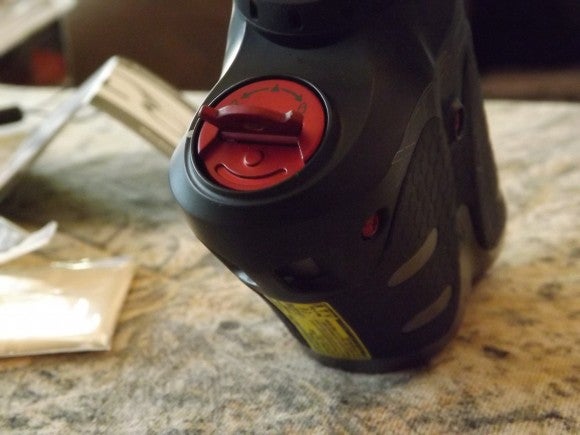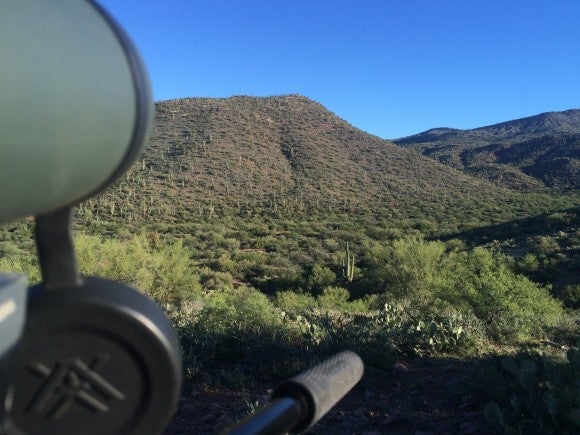A tip of the hat to Aaron at Source Outdoor Group for sending me a Halo rangefinder for review!
From the Press Release:
Halo’s XTANIUM™ rangefinders use the best technology available to provide accurate yardage, but it’s their extra features that set them apart from the crowd.
With 8x magnification, you can quickly identify whether a buck is worthy of wearing your tag. You don’t have to get caught trying to juggle multiple optics when every second counts.
XTANIUM™ rangefinders also take the guesswork out of difficult shot angles. Inclines and slopes not only affect our ability to judge distance, they also affect bullets and arrows due to the mathematics of gravity and the true horizontal distance to a target. AI Technology™ built into every XTANIUM™ rangefinder accounts for slope to target. Simply take the reading displayed in your XTANIUM™ and make the shot.
If your target is on the move, XTANIUM™ has you covered. Scan mode allows for constant ranging of moving targets, providing up-do-date feedback for that critical moment.
Finally, even the best data won’t do you any good if you can see it, so XTANIUM™ rangefinders feature a red OLED display to make the numbers stand out in any conditions, whether bright sun or those precious last few minutes before dark.
All those great features are packed into Halo’s new tough but light aluminum housing to withstand the bumps and bruises of the most demanding hunt.
Halo XTANIUM™ rangefinders are available in two models. The XTANIUM™ 1000 which ranges distance out to 1,000 yards and the XTANIUM™ 600 which ranges distance out to 600 yards.
XTANIUM™ 600 Features:
• 600 yard range | 8x magnification
• New designed lighter weight aluminum housing
• Maximum of 600 yards to reflective target
• 8x Magnification
• Red OLED display for easy use (organic light emitting diode)
• AI Technology™ accounts for slope to the target
• Scan mode allows for constant ranging
• Precise to +/- 1 yard
• Water resistant
• 1 year warranty
• Uses 1 CR2 lithium ion batter
• Nylon case included
I drew an Arizona Mule Deer tag for Unit 23 this year, which is in central Arizona. For most hunting in Arizona (and in the west for that matter) – a rangefinder is indispensable. Long shots are much more common, and with the rugged canyons found in most units, angle compensation is a great feature. I was anxious to try out the rangefinder from Halo Optics on this hunt.
The Unit take a single Lithium battery, and access is really easy.
The unit comes with a case and a basic User’s manual that is easy to follow. This rangefinder is smaller than some of the others I have used and fits really nicely into my hand. The holster is simple but practical and has a secure closure that you can fasten and unfasten easily with one hand. These are great features. I wish the cord was a little longer; I like to slip it over my belt or tie off to my bino harness in case I drop it or it slips out of the holster. That being said, this holster is secure enough that isn’t much of a worry.
The rangefinder has a solid metal housing which makes it very tough and it is also weather resistant. Included in the display are a reticle, low battery icon, unit of measure (yards or meters) and the angle. The unit has a scan mode which allows you to range continuously while moving the rangefinder from point to point. The documentation indicates the rangefinder will scan an object such as a tree out to 500 yards, and a deer out to 225 yards.I was routinely ranging objects out to 500 yards on my hunting trip. In my case I think it outperformed its stated specifications. The Unit worked really well in low light conditions.
The price listed on the website is $275 and that price is reasonably consistent with other similar rangefinders, with similar features.
The only negative point about this review is the lack of a deer photo. Unfortunately, all we saw were does during this particular hunt, and I was limited to bucks. I would recommend these rangefinders without hesitation, especially if you managed to find one on sale which would really give an edge to the value. Well done, Halo!
Learn more about Halo at their website: Halo Optics






